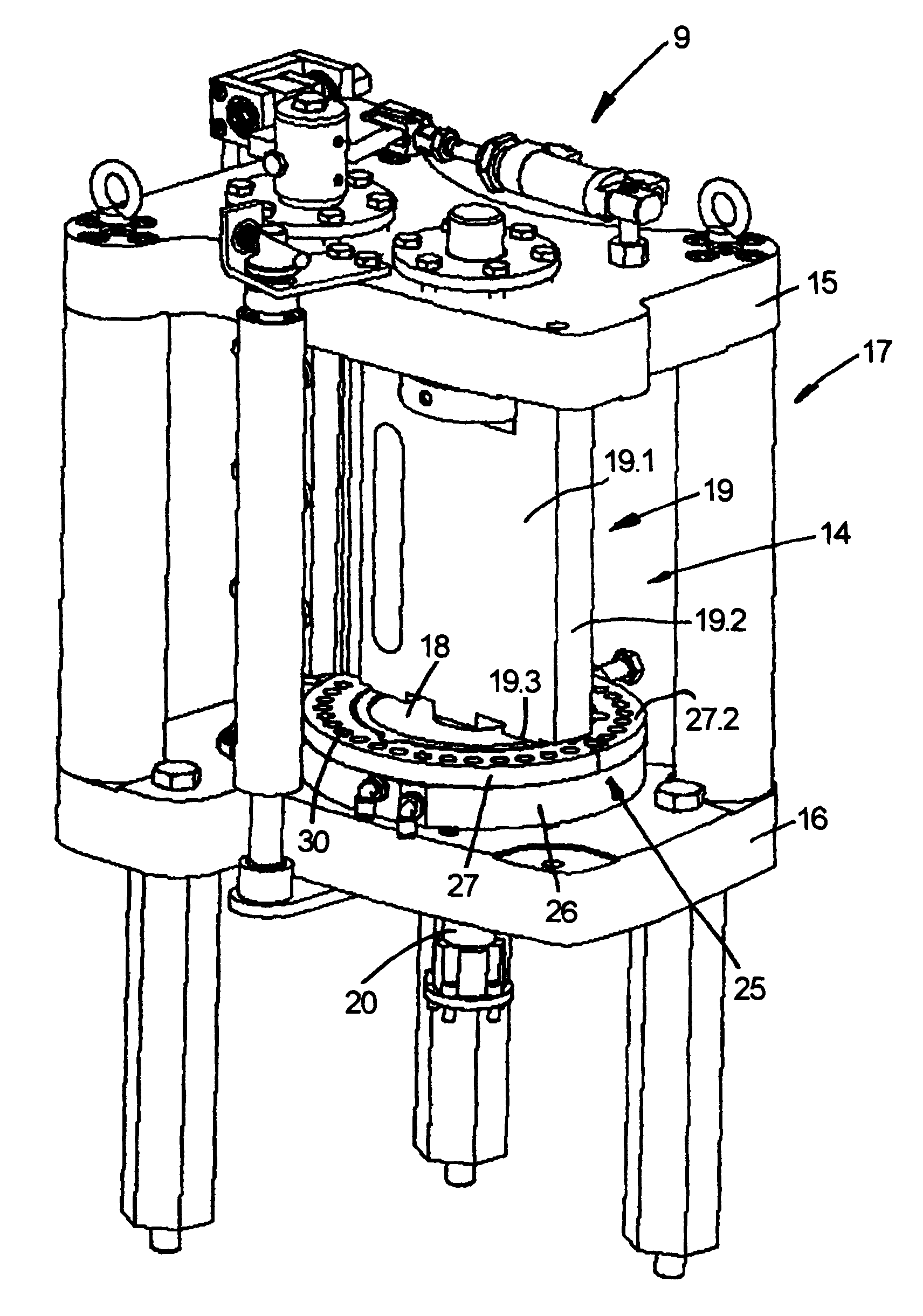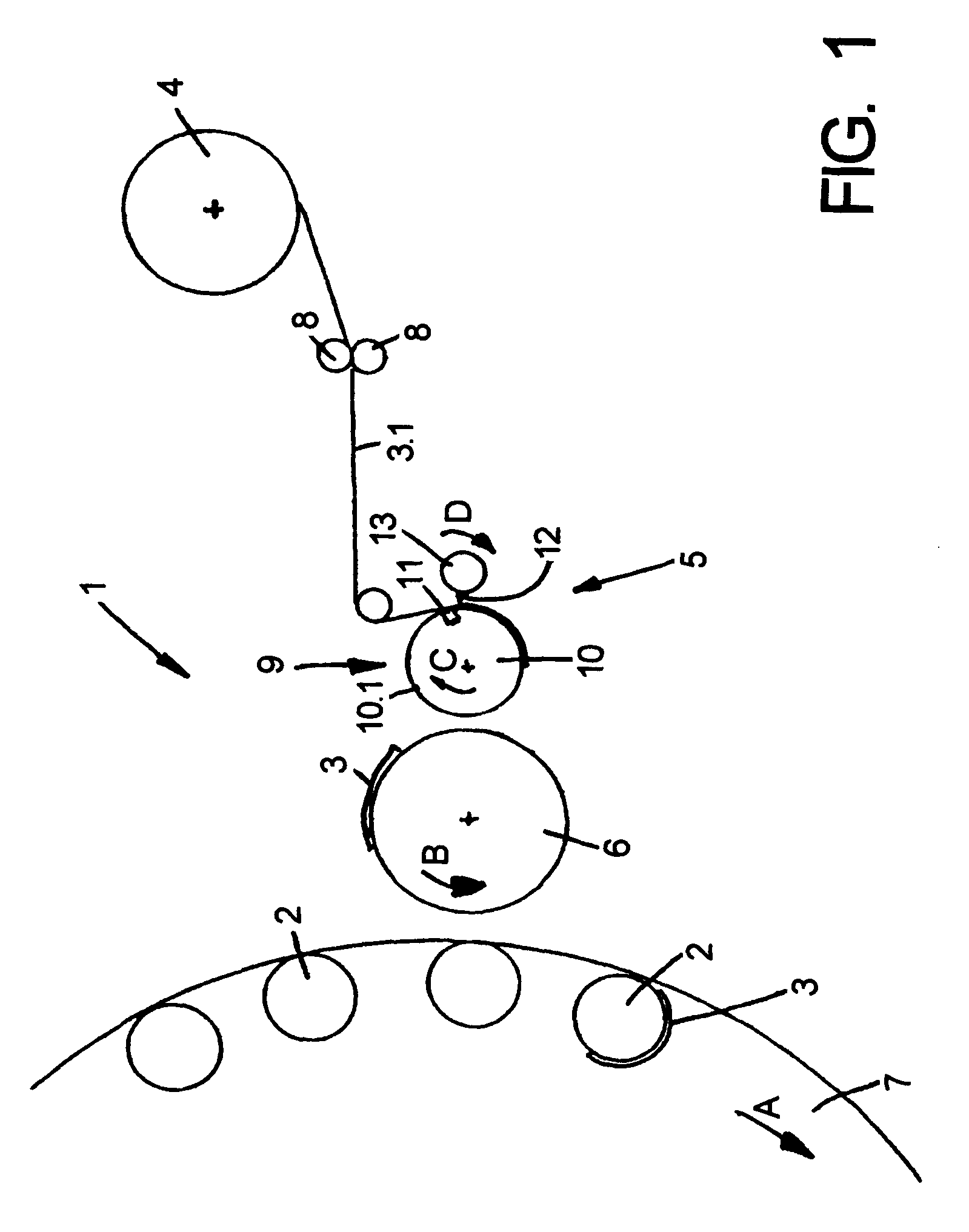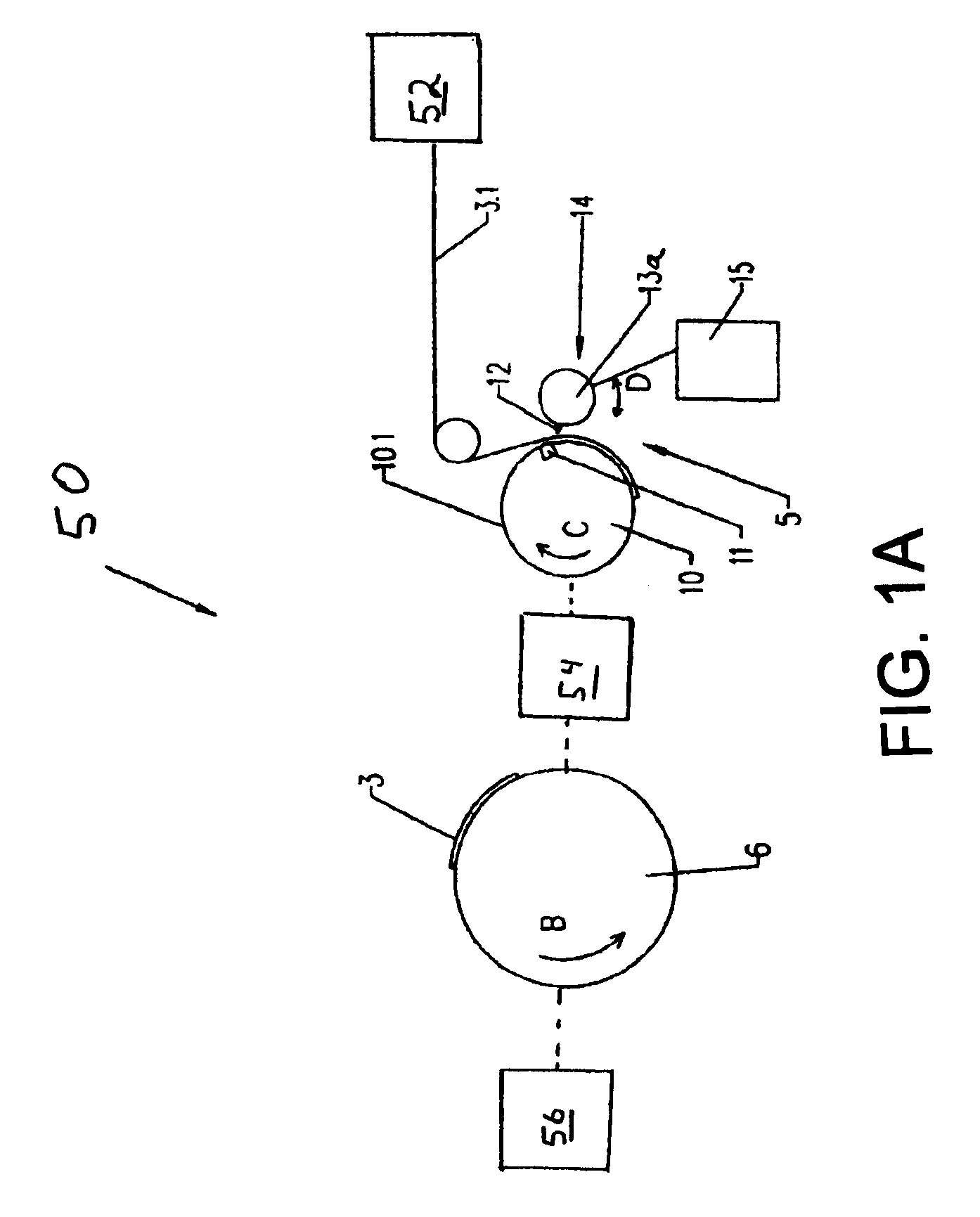Beverage bottling or container filling plant having a beverage bottle or container labeling machine, and a beverage bottle or container labeling machine having a vacuum drum
a beverage bottling or container filling plant and beverage bottle or container technology, which is applied in the field of vacuum drums, can solve the problems of changing the cutting gap, affecting the operation of the vacuum drum, and not being able to substantially avoid the loss of friction, so as to achieve the effect of further enhancing the heat conductivity, cooling or chilling
- Summary
- Abstract
- Description
- Claims
- Application Information
AI Technical Summary
Benefits of technology
Problems solved by technology
Method used
Image
Examples
Embodiment Construction
[0024]In the figures a labeling arrangement 1 is configured to operate with a labeling machine for labeling of bottles, or such like containers 2 with so-called Roll-Fed labels 3 which are drawn off from a stock roller 4 of an endless, tape-shaped label material 3.1; and the labels 3 are cut off in a cutting arrangement 5 of the labeling arrangement 1 with the respective length that is required and / or desired for a label 3, from the label material 3.1. The labels 3 established in this manner are passed, by means of a labeling drum and transfer drum 6, onto the containers 2 which are moving there along on a rotor 7 that is rotating about a vertical machine axis of the labeling machine in the labeling arrangement 1; and the labels 3 are secured to the containers 2. The rotation directions of the rotor 7 and of the transfer drum 6 are respectively indicated by the arrows A or B.
[0025]In other words, in one possible embodiment, FIG. 1 depicts a labeling arrangement 1. Labeling arrangeme...
PUM
| Property | Measurement | Unit |
|---|---|---|
| length | aaaaa | aaaaa |
| vacuum | aaaaa | aaaaa |
| rotation | aaaaa | aaaaa |
Abstract
Description
Claims
Application Information
 Login to View More
Login to View More - R&D
- Intellectual Property
- Life Sciences
- Materials
- Tech Scout
- Unparalleled Data Quality
- Higher Quality Content
- 60% Fewer Hallucinations
Browse by: Latest US Patents, China's latest patents, Technical Efficacy Thesaurus, Application Domain, Technology Topic, Popular Technical Reports.
© 2025 PatSnap. All rights reserved.Legal|Privacy policy|Modern Slavery Act Transparency Statement|Sitemap|About US| Contact US: help@patsnap.com



